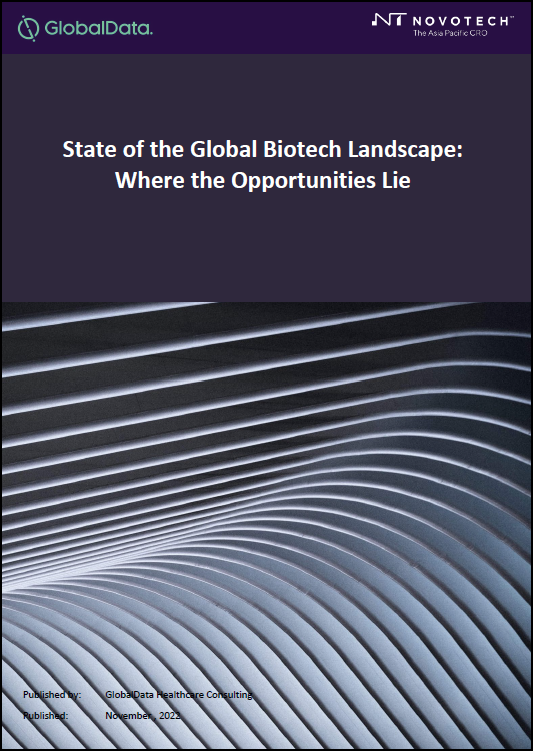
Established itself as the second largest market in the world, behind only the United States, the Chinese pharmaceutical sector is second to the US market and is forecasted to continue its growth to reach USD 300.9bn by 2025 at a healthy 12.2% CAGR[1]. These growth projections are built upon a strong foundation, with the country increasing its expenditure on healthcare from 5.2% in 2012 to 6.64% by 2019 of its GDP, according to GlobalData. Furthermore, the country’s over 60s population is anticipated to reach 360m by 2030 compared with 210m in 2020, according to GlobalData, bringing a prime opportunity for China’s domestic drug development industry to capitalise on the growing need for new therapeutics.
In the Chinese government’s “Made in China 2025” industrial strategy, the biotech sector is expected to prove a key focal point[2]. Supporting this initiative, a series of policies and regulatory reforms have been implemented in order to streamline the drugs approval process and foster a new culture that enables innovation to flourish. In addition, the State Administration for Market Regulation (SAMR) has revised the Administration Measures for Drug Registration to streamline the complexity of new therapy approval and reduce the cost burden on domestic drug development industry.
At the same time, the country’s wider pharmaceutical regulations were revised and brought in line with global standards. This culminated in the regulations being approved by the International Council for Pharmaceutical for Human Use in 2017, making the market more attractive to domestic and foreign investors alike[3].
Fresh investment and wider reimbursement
This has prompted a surge in capital investment into the sector, with the market value of public listings across the Nasdaq, Hong Kong Stock Exchange and Shanghai Stock Exchange Science and Technology Innovation Board (STAR) growing from just USD 3bn back in 2016 to more than USD 380bn by July 2021, according to McKinsey[4]. Furthermore, of the 10 largest biopharma initial public offerings globally between 2018 and 2020, seven originated from China[5].
This fresh influx of investment from the capital markets has also been strengthened by reforms made to the National Reimbursement Drug List (NRDL) that has expanded the access to innovative drugs through the country’s basic medical insurance coverage.
In 2020, the expansion of the NRDL to include 2,800 drugs resulted in an average price cut of 51%, which has been followed up with a new NRDL in March 2021 that is designed to further increase access and reduce the cost of access to new drugs, of which many will come from the biopharma sector.
In support of this, the government has also vastly increased the resources that it has dedicated to approving these new drugs, with the headcount at the Centre for Drug Evaluation (CDE) rising from just 150 in 2015 to more than 700 by the end of 2018.
The manufacture of generics accounted for 90% of marketed products in June 2021, according to GlobalData. The focus in China is now shifted towards the development and production of biosimilars and other more innovative drugs by utilising these regulatory changes and increasing investor interest.
The push for biosimilars is expected to be one of the key beneficiaries of the regulatory reforms with the creation of biosimilar pathway in 2015, which had led to the approval of 30 products and the development of more than 100 in the clinical development pipeline as of June 2021[6].
The key to enable this more innovative approach to biosimilar development has been a more scientific approach towards clinical trial data requirement for local manufactured biosimilars with the National Medical Products Administration (NMPA) formally approved the use of data from non-Chinese clinical trials.
The use of foreign data biopharma firms can draw from, alongside the other reforms made, have opened up unprecedented opportunities within China for the biotech market.
“These are tremendous initiatives that are seen as extremely positive for biotechs,” explains Andy Liu, Head of China for Novotech, the Asia Pacific Contract Research Organization (CRO). “The expedited regulatory approval and the updated communication channel provide biotech’s with a transparent and equal platform for discussing the drug development plan.”
Explaining that such measures led the NMPA to approve eight break-through therapies in 2021 – including three accelerated approvals and 12 fast-tracked approvals – Liu is confident that the market will only continue to grow.
The forecasted growth for both the pharmaceutical and biopharma sectors offers a lucrative future, and provides a healthy ecosystem with an increasing competition on skilled labour and a continuously increase of development costs.
“As part of this booming market, there are also challenges,” explains Liu. “The entire drug development industry is facing the challenge of a shortage of talents to accommodate sustainable growth.
“As the cost of labour continues to surge, Novotech is fully leveraging our global network by deploying a global shared service centre in China where our well-established systems and processes are able to bring down costs without compromising on quality.”
To find out more, download the whitepaper below.
[1] https://pharma.globaldata.com/Analysis/TableOfContents/CountryFocus–Healthcare–Regulatory-and-Reimbursement-Landscape—China
[2] https://pharma.globaldata.com/Analysis/Details/Thematic-Research–China-Impact-on-Pharma
[3] https://pharma.globaldata.com/Analysis/Details/Thematic-Research–China-Impact-on-Pharma
[4] https://www.mckinsey.com/industries/life-sciences/our-insights/the-dawn-of-china-biopharma-innovation
[5] https://www.mckinsey.com/industries/life-sciences/our-insights/the-dawn-of-china-biopharma-innovation
[6] https://pharma.globaldata.com/Analysis/Details/Thematic-Research–China-Impact-on-Pharma



